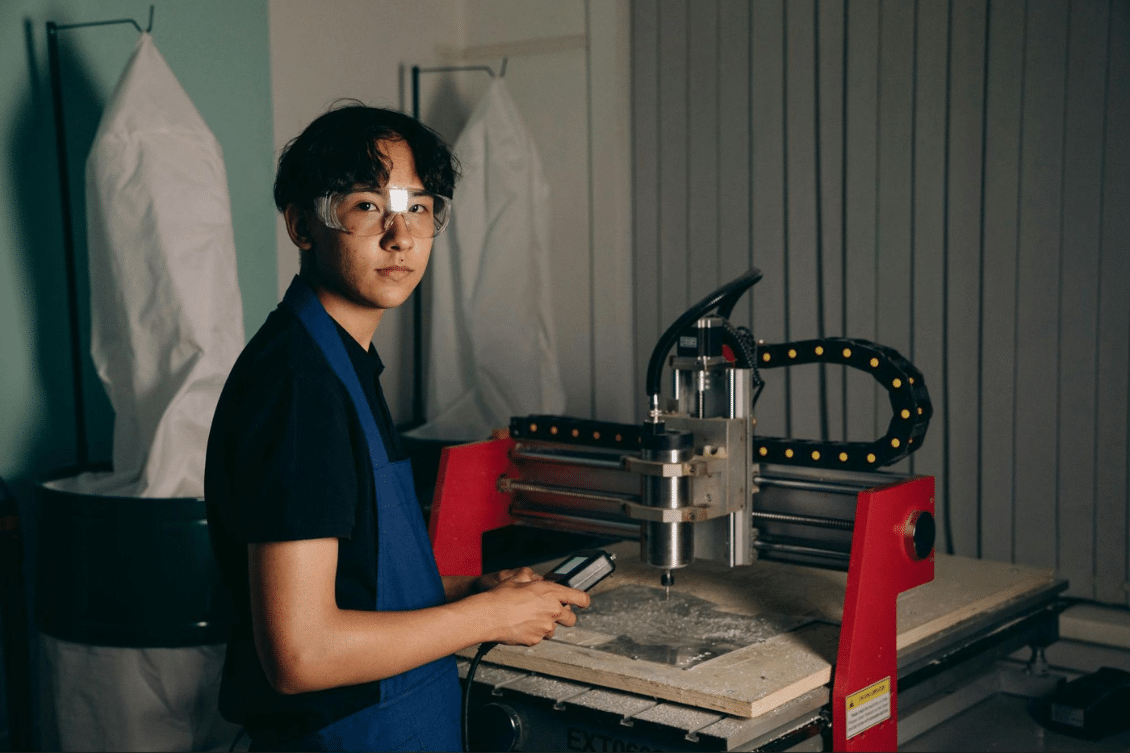
What manufacturers need in a supplier when they are a startup is usually going to be different than what they need as they scale up or at a mature stage. Eventually, a manufacturer will need to question whether or not the supplier they are working with can fully support them as they scale their organization. Sometimes, a supplier is willing to invest in their operations to support your scale while other times they do not want to take a financial risk on a customer who might leave them anyway.
The relationship between a supplier and the manufacturer must be solid. The supplier is often looked at as a strong partner of the manufacturer. If the supplier is no longer able to support the manufacturer then oftentimes they will feel it. The manufacturer’s growth, quality, output, and more will start to be affected.
This blog will look at the 5 signs to watch out for when you are outgrowing your supplier. Usually, the relationship between the supplier and the manufacturer continues to remain strong but there are signs when they can no longer support your growth.
Sign 1: Increased Production Demands
When a manufacturer experiences a surge in demand for its products, it’s often a sign of success and market acceptance. However, this increased demand can put significant strain on the capacity and capabilities of their supplier. The supplier, who may have been adequately meeting the manufacturer’s needs during periods of lower volume, such as when they are starting out or launched a crowdfunding campaign, may struggle to keep up when faced with sudden spikes in production requirements.
For example, backlogs in production may begin to accumulate as the supplier’s resources become stretched thin. This backlog can result in longer lead times, causing delays in the delivery of crucial components or materials to the manufacturer’s facility. These delays can ripple through the production process, disrupting schedules and potentially impacting customer satisfaction.
In addition, in their efforts to meet the heightened production demands, suppliers may resort to rushing through processes or cutting corners. This can lead to quality issues, as attention to detail and adherence to quality standards may be compromised in favor of meeting deadlines. The manufacturer may start to observe an increase in defects or inconsistencies in the supplied components, undermining the overall quality of the finished products.
In essence, the strain caused by increased production demands can expose the limitations of a supplier’s capacity and capabilities. Recognizing these signs early allows manufacturers to proactively address potential bottlenecks in their supply chain and seek out partners better equipped to support their growing needs.
Sign 2: Lack of Customization or Flexibility
As manufacturers evolve and innovate, they often find themselves exploring new avenues to differentiate their products and meet the ever-changing demands of consumers. This evolution may lead to evolving product requirements that surpass the capabilities of their current supplier. While the existing supplier may have been adept at meeting the manufacturer’s initial specifications, they may struggle to keep pace with the increasing need for customization and flexibility.
One significant sign of outgrowing a supplier is the inability to accommodate customizations. Manufacturers may find themselves needing specialized components or tailored solutions to stay competitive in the market or cater to specific customer preferences. However, if the supplier lacks the necessary expertise, equipment, or willingness to adapt their processes to accommodate these customizations, it can hinder the manufacturer’s ability to innovate and meet market demands effectively.
Similarly, not being able to adapt to design changes or modifications can be a red flag indicating that the manufacturer has outgrown their current supplier. For manufacturers, the ability to quickly iterate on product designs and incorporate feedback is essential for staying ahead of the curve. However, if the supplier is resistant to making adjustments or imposes significant lead times and costs for design changes, it can severely hamper the manufacturer’s agility and responsiveness.
Sign 3: Quality Control Issues
Consistent quality output is the cornerstone of manufacturing excellence, underpinning customer satisfaction, brand reputation, and long-term success. Manufacturers rely on their suppliers to maintain quality control processes to ensure that every component or material meets the specified standards.
One of the primary indicators that a manufacturer may be outgrowing their supplier is a decline in product quality. Signs of declining quality may manifest in various ways, such as increased defect rates or a rise in customer complaints. These issues can have far-reaching implications for the manufacturer, affecting product performance, brand perception, and ultimately, customer loyalty.
For example, product recalls are a glaring sign of quality control issues that can severely impact a manufacturer’s reputation and bottom line. Recalls not only incur significant costs in terms of replacing or repairing defective products but also erode consumer trust and confidence in the brand. Whether due to manufacturing defects, substandard materials, or lapses in quality control protocols, recalls highlight the critical importance of robust quality assurance measures throughout the supply chain.
Moreover, deviations from agreed-upon specifications can indicate a lack of consistency and reliability in the supplier’s manufacturing processes. Whether due to errors in production, variations in raw materials, or lapses in quality control checks, deviations from specifications can compromise product integrity and performance. Manufacturers may find themselves grappling with increased rejections, rework, or non-conformances, further straining their resources and jeopardizing customer satisfaction.
Step 4: Limited Innovation and Technology Integration
In today’s fast-paced and competitive market, innovation is not a buzzword but a strategic imperative for manufacturers seeking to maintain their edge and relevance. Whether it’s introducing groundbreaking products, optimizing operational efficiency, or enhancing customer experiences, innovation is the lifeblood that fuels growth and differentiation in the industry.
Manufacturers rely on their suppliers not only for the timely delivery of components or materials but also for contributions to the innovation ecosystem. However, when a supplier demonstrates a limited capacity for innovation and a reluctance to integrate advanced technologies, it can pose significant challenges to the manufacturer’s growth trajectory.
First and foremost, a supplier’s lack of investment in technology or innovation may hinder a manufacturer’s ability to stay competitive in the market. As consumer preferences evolve and industry trends shift, manufacturers must continually adapt and innovate to meet changing demands. Yet, if the supplier remains entrenched in outdated practices or fails to embrace emerging technologies, it can stifle the manufacturer’s agility and responsiveness to market dynamics.
For example, the inability to adopt new manufacturing processes may limit the manufacturer’s ability to capitalize on advancements in automation, efficiency, or sustainability. While competitors leverage innovative production techniques to drive down costs and improve product quality, manufacturers reliant on outdated methods may find themselves falling behind the curve.
Sign 5: Poor Communication and Support
Effective communication and collaboration form the foundation of successful partnerships between manufacturers and suppliers. Clear lines of communication facilitate transparency, alignment of goals, and swift resolution of issues, enabling both parties to operate in sync and drive mutual success. However, when communication and support take a step down, it can impede progress, undermine trust, and strain the relationship between manufacturers and suppliers.
First and foremost, it’s essential to go over the importance of timely and responsive communication in the manufacturing ecosystem. Manufacturers rely on their suppliers to provide updates on production schedules, address inquiries or concerns, and collaborate on problem-solving initiatives. When suppliers are unresponsive or slow to communicate, it can lead to uncertainty, delays, and disruptions in the supply chain.
For example, if a manufacturer encounters an unexpected issue or change in requirements, prompt communication with the supplier is crucial to mitigating the impact and finding a timely resolution. However, if the supplier is unresponsive to inquiries or fails to provide updates on the status of orders, it can hinder the manufacturer’s ability to proactively manage risks and plan accordingly.
Moreover, breakdowns in communication can exacerbate existing challenges and escalate minor issues into larger problems. Difficulty in resolving issues due to poor communication can lead to frustration, mistrust, and strained relationships between manufacturers and suppliers. Whether it’s a discrepancy in specifications, a quality control issue, or a logistical hiccup, effective communication is essential for identifying root causes and implementing corrective actions collaboratively.
Furthermore, a lack of proactive support from suppliers can hinder the manufacturer’s progress and innovation efforts. Manufacturers often rely on their suppliers not only to deliver products or services but also to offer insights, suggestions, and recommendations for improvement. However, if the supplier fails to proactively engage with the manufacturer, share best practices, or propose innovative solutions, it can stifle the manufacturer’s ability to drive continuous improvement and innovation.
For instance, suppliers who are passive in their approach may miss opportunities to optimize processes, reduce costs, or enhance product quality through collaboration with the manufacturer. In contrast, proactive suppliers actively seek to identify areas for improvement, offer suggestions for optimization, and collaborate on innovation initiatives, fostering a culture of continuous learning and growth.
Conclusion
The supplier plays a pivotal role in the success of a manufacturer. As we’ve explored throughout this blog, recognizing the signs that indicate a manufacturer may be outgrowing their supplier is essential for navigating the complex dynamics of the supply chain landscape effectively.
From increased production demands to limited innovation and technology integration, each sign serves as a critical indicator that warrants careful consideration and strategic action. By acknowledging these signs early and proactively reassessing supplier relationships, manufacturers can position themselves for long-term success, resilience, and competitiveness in the market.
OpenBOM is a cloud-based PDM & PLM platform to manage your engineering and manufacturing data. Companies from startups to Fortune 500s use OpenBOM to create a centralized database to bring in, store, and manage their manufacturing data. With this infrastructure, users also use OpenBOM to streamline both their change management and PO processes.
If you need to improve the way you manage your data and processes, share data instantly, or collaborate with contractors and suppliers. Contact us today for a free consultation.
By: Jared Haw
Join our newsletter to receive a weekly portion of news, articles, and tips about OpenBOM and our community.











